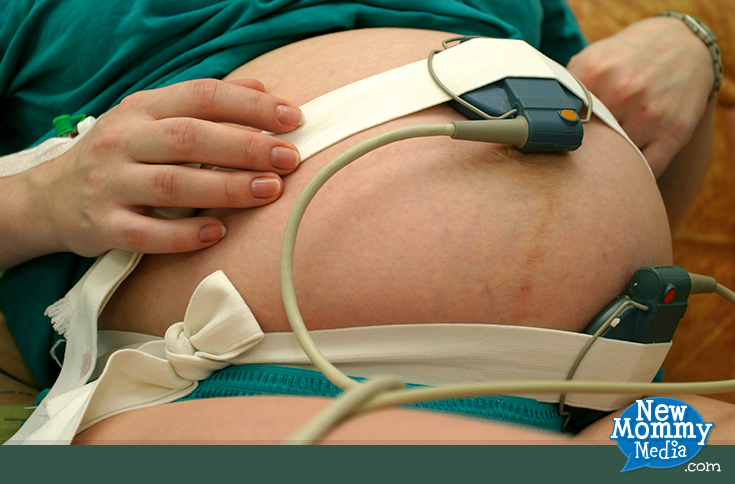Prenatal Testing: Non-Stress Test
In this article:
- What is a fetal non-stress test?
- When are they typically performed?
- How is a fetal non-stress test performed?
- Under what circumstances are fetal non-stress tests ordered?
- What are you looking for in the results?

As you get closer to your due date, your provider may perform a fetal non-stress test. The non-stress test (or NST, as it’s sometimes called) is an alternative to the contraction stress test. The NST gives similar results, but is less invasive and therefore more commonly used. Read on for all the details on this prenatal test!
What is a fetal non-stress test?
A fetal non-stress test is a way of evaluating the well being of a baby in utero. It can be performed before or during labor, although in this post we're referring mostly to pre-labor NSTs. Essentially, monitors are hooked up to the mother’s belly and the monitors record the baby’s heartbeat and transcribe it on a piece of paper. Providers are typically looking for variation in the heart rate, which is a good indication that things are healthy.
TIP: The test is named “non-stress” because no stress is placed on the fetus during the test. Want more information about non-fetal stress tests? Listen to our episode or read our transcript!
When are they typically performed?
You can begin performing NSTs around twenty-six to twenty-eight weeks of pregnancy, once the baby’s neurological and cardiac development are advanced enough to interpret. Many women will receive NSTs as they approach their due date, especially if they are overdue.
How is a fetal non-stress test performed?
Depending on your provider, NSTs can be performed in the office or in the hospital. The woman will typically be in a reclined position and the test will take about 20-30 minutes. Usually a nurse hooks up the monitors while a doctor, nurse midwife, or nurse practitioner interprets the results almost immediately.
Under what circumstances are fetal non-stress tests ordered?
- Decrease in fetal movement
- Maternal illnesses such as chronic hypertension or auto immune disorders
- History of fetal loss
- For reassurance as a woman approaches or surpasses her due date
What are you looking for in the results?
Providers want to see variability of the heart rate over the course of the 20-30 minute test. If there’s sufficient variability (accelerations and decelerations), then the results are considered reactive, which is good. If the results are classified as non-reactive, your provider may order further monitoring or an ultrasound.